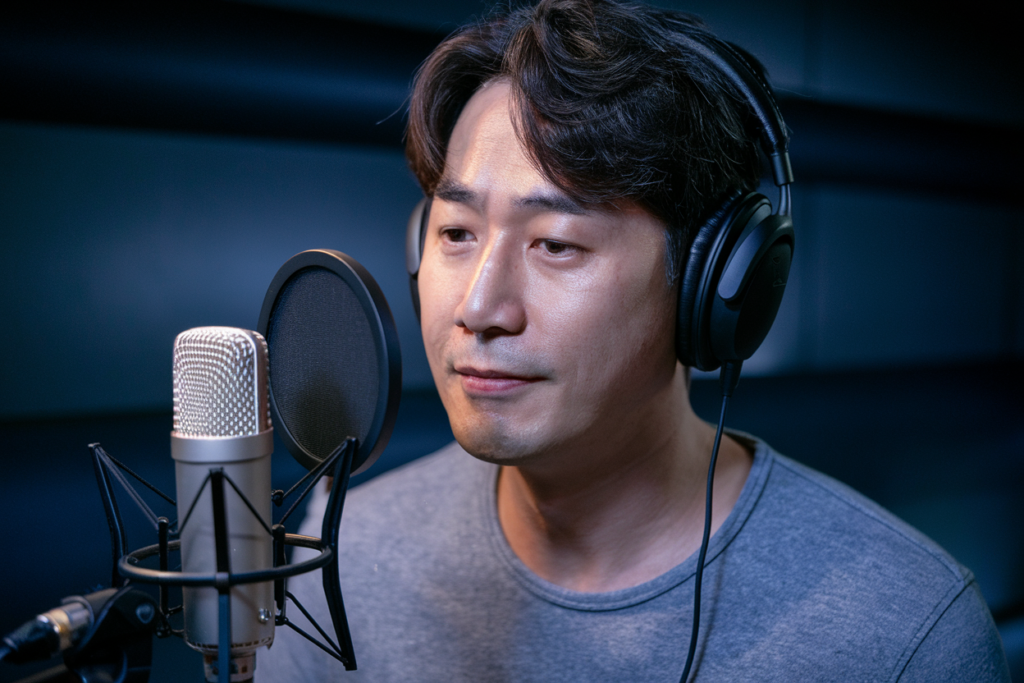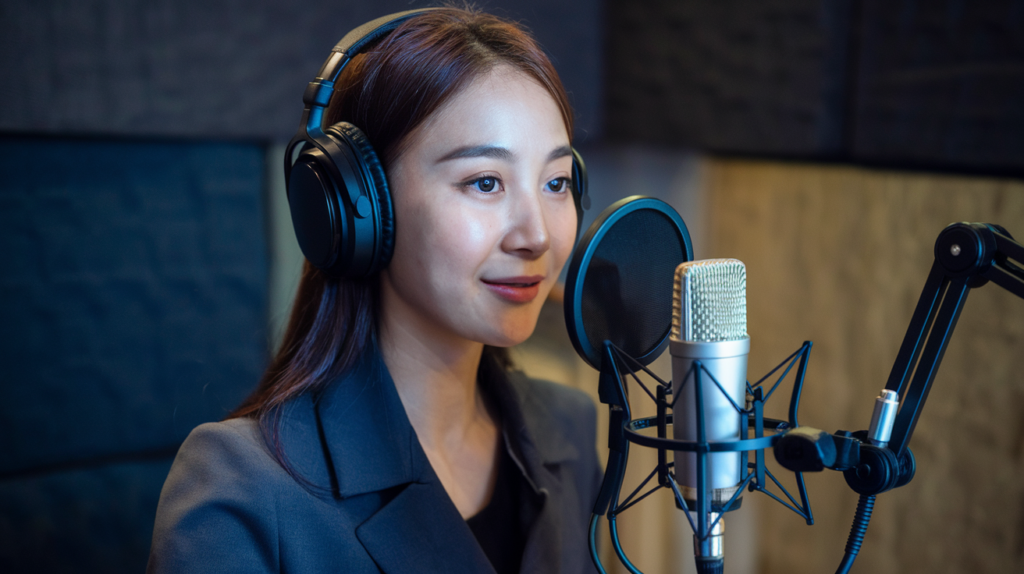Key Takeaways
- Art of Synchronization: Korean dubbing techniques focus on aligning voice performances with actors’ lip movements, enhancing emotional connection and viewer immersion.
- Cultural Nuances: Voice actors must navigate cultural subtleties during the dubbing process to maintain character authenticity and ensure relatable performances for diverse audiences.
- Dialogue Adaptation: Effective lip syncing requires modifying original scripts to fit lip movements while preserving meaning, allowing for seamless integration of language and visuals.
- Technical Tools: Advanced software solutions and innovations in lip syncing technology aid voice artists in achieving precise audio synchronization with on-screen actions.
- Emotional Matching: Successful dubbing involves matching vocal delivery with characters’ emotions and expressions, requiring deep script interpretation and collaboration with directors.
Ever watched a Korean drama and wondered how the voices perfectly match the actors’ lip movements? Korean dubbing lip sync techniques are an art form that brings characters to life, making every emotion resonate with viewers. You might be surprised to learn that it’s not just about translating words; it’s about capturing the essence of each performance.
Overview Of Korean Dubbing
Korean dubbing involves a meticulous process that enhances the viewer’s experience by aligning voice performances with actors’ lip movements. This art form requires skilled voice artists to not only translate dialogue but also capture the nuanced emotions of each character. Each performance becomes a blend of linguistic accuracy and emotional depth, ensuring that the audience connects with the story on multiple levels.
Voice over talent plays a crucial role in this process. They analyze scripts for context, tone, and character motivation before stepping into the recording booth. This preparation helps them deliver authentic performances that resonate with viewers. Voice actors adapt their delivery style to fit various genres, whether it’s animation, live-action films, or television series.
The synchronization aspect is vital in Korean dubbing. Voice over artists work closely with directors and sound engineers to ensure that their speech matches the timing and rhythm of on-screen actions perfectly. They may adjust their pacing or even modify lines slightly to maintain this sync while preserving the original meaning.
Additionally, cultural nuances often influence how dialogues are interpreted during dubbing sessions. A voice over actor must navigate these subtleties skillfully to maintain authenticity in character representation across different audiences.
Korean dubbing showcases both professional expertise and creative artistry, making it an integral part of delivering engaging content to viewers worldwide.
Importance Of Lip Syncing In Dubbing
Lip syncing plays a crucial role in the success of dubbing projects. It goes beyond simply translating dialogue; it ensures that voice artists’ performances match the on-screen action, enhancing viewer immersion. When you hear a voice perfectly synchronized with an actor’s lip movements, it creates a seamless experience that captivates your audience.
Impact On Audience Engagement
Effective lip syncing significantly impacts audience engagement. When dialogue aligns with visuals, viewers connect more deeply with characters and stories. You’ll notice how well-synced voiceovers make emotions resonate stronger, drawing your audience into the narrative. This connection heightens their overall viewing experience and keeps them invested in what unfolds on screen.
Cultural Considerations In Lip Syncing
Cultural nuances are vital during the lip sync process. Voice actors often adapt lines to reflect local idioms or expressions while maintaining character authenticity. Understanding these subtleties allows voice over talent to convey emotions accurately and naturally for diverse audiences. By honoring cultural contexts, you ensure that every performance feels genuine and relatable, which is essential for effective storytelling in any language.
Techniques Used In Korean Dubbing
Korean dubbing employs several techniques that enhance the lip sync process, ensuring seamless integration of voice and visuals.
Adapting Dialogue To Fit Lip Movements
Adapting dialogue is crucial in achieving effective lip sync. Voice artists analyze original scripts and modify lines to align with the on-screen actors’ mouth movements. This adaptation often involves rephrasing or shortening phrases while preserving the original meaning and emotional impact. By doing this, voice actors maintain authenticity while also ensuring that their performances feel natural and engaging. The goal is to create a harmonious blend of language and visual action that resonates with viewers.
Timing And Rhythm Adjustments
Timing and rhythm adjustments play a significant role in Korean dubbing’s success. Voice over talent collaborates closely with directors to ensure speech patterns match character actions precisely. This synchronization may require altering delivery speed or emphasizing particular words for dramatic effect. Effective timing not only enhances lip syncing but also contributes to the overall narrative flow, making scenes more dynamic and emotionally charged. Audiences appreciate when characters’ emotions are conveyed through well-timed dialogue that complements their physical expressions on screen.
By leveraging these techniques, Korean dubbing enriches storytelling, drawing viewers deeper into the narrative experience while showcasing the artistry of voice performers.
Tools And Technologies
Korean dubbing relies on advanced tools and technologies to achieve seamless lip sync. These resources not only enhance the quality of voiceovers but also streamline the entire dubbing process.
Software Solutions For Dubbing
Numerous software solutions cater specifically to dubbing needs. Programs like Adobe Audition and Pro Tools offer comprehensive audio editing features, enabling voice artists to refine their performances effortlessly. These platforms allow for precise adjustments in pitch, timing, and effects, ensuring that every line aligns perfectly with on-screen actions. Additionally, some software includes specialized plugins designed for syncing dialogue with video frames, which can save time during the production process. By utilizing these tools, voice talent can focus on delivering authentic performances without getting bogged down by technical challenges.
Innovations In Lip Syncing Technology
Innovations in lip syncing technology significantly improve the dubbing experience. Advanced algorithms analyze actor mouth movements frame by frame, allowing for more accurate synchronization of audio with visuals. This tech-driven approach helps voice actors adapt their lines naturally while staying true to character emotions and intentions. Many studios now use artificial intelligence (AI) tools that assist in generating phonetic matches between spoken words and visual cues—enhancing efficiency and effectiveness in achieving flawless lip syncs.
These advancements not only elevate the quality of Korean dubbing but also push creative boundaries within the industry. As technology continues to evolve, you’ll see even more sophisticated methods emerge that enrich storytelling through enhanced voiceover artistry.
Challenges In Korean Dubbing
Korean dubbing presents unique challenges that can complicate the synchronization of voiceovers with on-screen performances. Understanding these hurdles is essential for anyone involved in the process.
Language Nuances And Translation Issues
Language nuances create significant obstacles during the dubbing process. Korean, with its rich expressions and cultural references, often doesn’t translate directly into English or other languages. Voice artists strive to maintain the original meaning while adapting lines to suit local audiences. This adaptation requires a deep understanding of both source and target languages, ensuring that humor, emotion, and context remain intact. Translators also face pressure to keep dialogue concise enough for effective lip syncing. Achieving this balance demands exceptional skill from voiceover talent.
Matching Emotions And Expressions
Matching emotions and expressions adds another layer of complexity to Korean dubbing. Voice actors must deliver performances that resonate emotionally with viewers while aligning perfectly with character movements. Achieving this requires not just vocal talent but also an ability to interpret scripts deeply—capturing subtle emotional shifts that may occur during scenes. Collaborating closely with directors helps ensure alignment between verbal delivery and visual cues, enhancing audience engagement. When voiceovers reflect genuine emotions tied to facial expressions and body language, they elevate storytelling significantly, making characters more relatable for viewers.
By navigating these challenges effectively, you ensure high-quality dubbing that resonates well beyond linguistic barriers—creating a seamless viewing experience that captivates audiences around the world.
Conclusion
Korean dubbing lip sync techniques are essential for creating immersive viewing experiences. By aligning voices with on-screen actions, these methods enhance emotional resonance and audience engagement.
The skillful adaptation of dialogue to fit character movements showcases the artistry involved in the process. As technology continues to evolve, so does the potential for even greater accuracy in synchronization.
By understanding and appreciating these techniques, you gain insight into the intricate world of dubbing that transcends language barriers and connects audiences worldwide. It’s a testament to how powerful storytelling can be when voice performances truly reflect the essence of each character.
Frequently Asked Questions
What is Korean dubbing lip sync?
Korean dubbing lip sync is the process of matching voice recordings to the mouth movements of actors in films or shows. This technique enhances viewer immersion and emotional connection by ensuring that spoken dialogue aligns with on-screen actions.
Why is lip syncing important in dubbing?
Lip syncing is crucial because it ensures that voice performances appear natural and authentic. Effective synchronization helps audiences engage more deeply with characters and stories, making emotional moments resonate stronger.
How do voice artists adapt dialogue for lip sync?
Voice artists modify lines to fit the timing and movements of actors’ mouths while preserving the original meaning. This requires careful analysis of scripts to maintain character authenticity and cultural nuances.
What tools are used in Korean dubbing?
Korean dubbing utilizes advanced audio editing software like Adobe Audition and Pro Tools. These tools allow for precise adjustments in pitch, timing, and effects, improving overall synchronization between audio and visuals.
What challenges do voice artists face in Korean dubbing?
Voice artists encounter challenges such as language nuances, cultural references, and maintaining emotional resonance during translation. They must balance concise dialogue for effective lip syncing while preserving humor, emotion, and context.
How does technology improve Korean dubbing?
Innovations like AI tools enhance accuracy in synchronizing audio with visuals. These advancements push creative boundaries, allowing for more sophisticated methods that enrich storytelling through improved voiceover artistry.
What role do directors play in the dubbing process?
Directors collaborate closely with voice artists to ensure that vocal delivery matches visual cues effectively. Their guidance helps achieve a seamless integration of speech patterns with character actions, enhancing audience engagement.
Can you explain cultural nuances in Korean dubbing?
Cultural nuances involve adapting dialogue to reflect local idioms while maintaining character authenticity. This adaptation ensures performances feel genuine and relatable to local audiences, which is vital for effective storytelling across languages.







